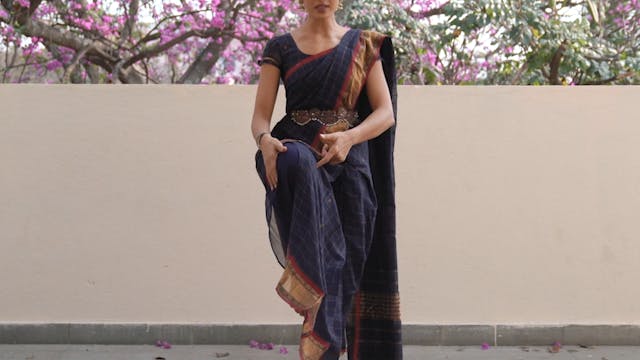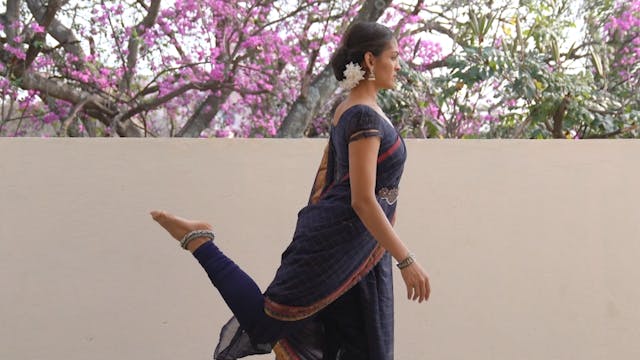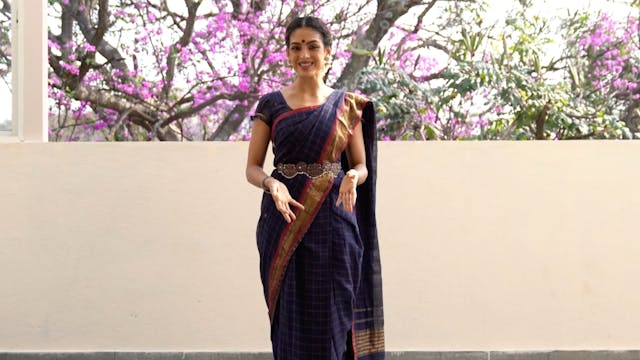The thighs are considered one of the Upāngas, or minor limbs according to the Natyashastra.
The movements of the thighs are used not only for the precise control in the execution of Nritta but also to communicate meaning in the context of gesture.
Please refer to the Shloka below for pronunciation. Please note that the separate movements of the head when put together in a Shloka form 'Sandhis', or compound words in the Sanskrit language. Words like 'ca', 'thatha', mean "and", "also". The separate words for each movement are also given below the shloka.
Kampanam valam caiva stambhanodvartane tathā
Nivartanam pañcaitānyūrukarmāni kārayet
Kampana
Valana
Stambhana
Udvartana
Nivartana
Up Next in Natyashastra: Angas & Upangas
-
Janghā bheda Introduction
Explains the things to keep in mind when executing the movements of the shank/shin. Please watch carefully before practising with the shloka.
-
Janghā bheda Shloka
The shins/ shanks are considered one of the Upāngas, or minor limbs according to the Nātyaśāstra
The movements are used not only for the precise control in the execution of Nritta but also to communicate meaning in the context of gesture.
Please refer to the Shloka below for pronunciation. Plea...
-
Gulphā bheda Introduction
The Ankle is considered one of the Upāngas, or minor limbs according to the Sangīta Ratnākara.
Introduction to the movements of the ankle.


